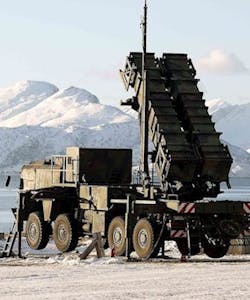Raytheon and United Technologies completed the merger of equals to form Raytheon Technologies, one of the largest aerospace and defense companies in the world. The all-stock merger on April 3 resulted in a technology company headquartered in Waltham, Mass., with net pro forma 2019 sales of about $74 billion and a total of 195,000 worldwide employees, of which 60,000 are engineers and scientists.
As part of the transaction, Raytheon Co. shares stopped trading prior to the opening of the New York Stock Exchange (NYSE) on April 3. When the market opened that day, every share of Raytheon Co. common stock was converted into the right to receive 2.3348 shares of United Technologies common stock. With the merger, the name of United Technologies is now Raytheon Technologies Corp. and the share for the newly formed company are traded on the NYSE under the ticker symbol “RTX.”
Raytheon Technologies is focused on many commercial, industrial and military markets, with Collins Aerospace Systems supplying avionics solutions, Pratt & Whitney a supplier of aircraft engines and power systems, Raytheon Intelligence & Space developing advanced sensors, and Raytheon Missiles & Defense providing end-to-end systems solutions to detect, track, and engage threats.
“Raytheon Technologies brings together two companies with combined strengths and capabilities that make us uniquely equipped to support our customers and partners during this unprecedented time,” said Greg Hayes, CEO of Raytheon Technologies Corp. “We will also play our part in the war on the COVID-19 pandemic, including doing everything we can to keep our employees around the globe safe and well.” Additional members of the new company’s executive team include Tom Kennedy, executive chairman, and Toby O’Brien, CFO.
About the Author
Jack Browne
Technical Contributor
Jack Browne, Technical Contributor, has worked in technical publishing for over 30 years. He managed the content and production of three technical journals while at the American Institute of Physics, including Medical Physics and the Journal of Vacuum Science & Technology. He has been a Publisher and Editor for Penton Media, started the firm’s Wireless Symposium & Exhibition trade show in 1993, and currently serves as Technical Contributor for that company's Microwaves & RF magazine. Browne, who holds a BS in Mathematics from City College of New York and BA degrees in English and Philosophy from Fordham University, is a member of the IEEE.

